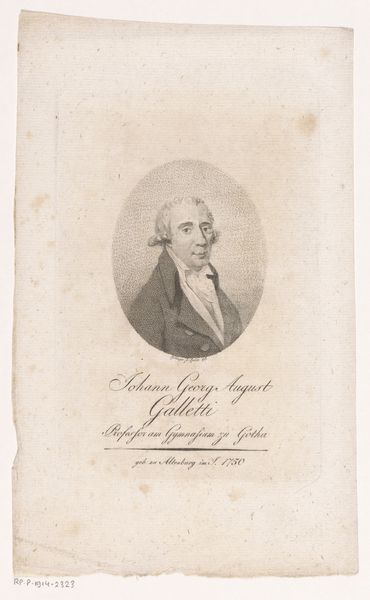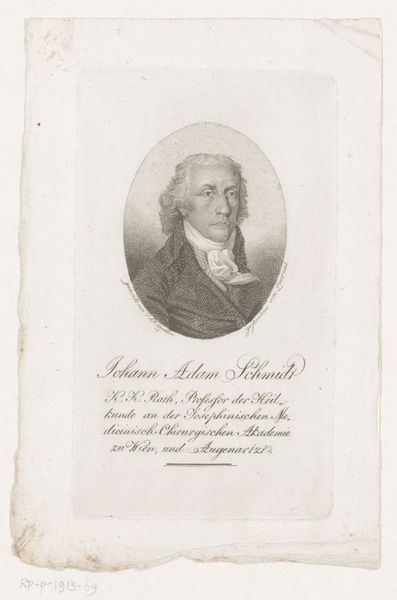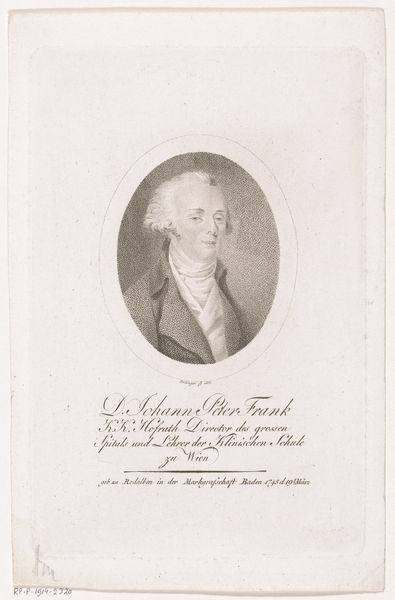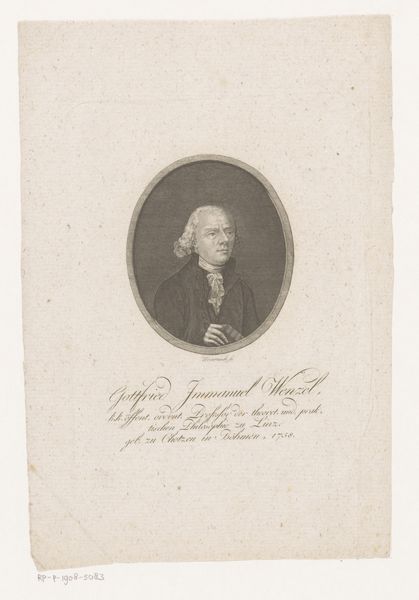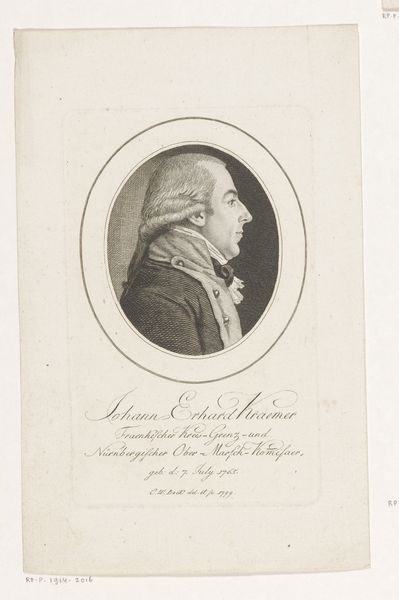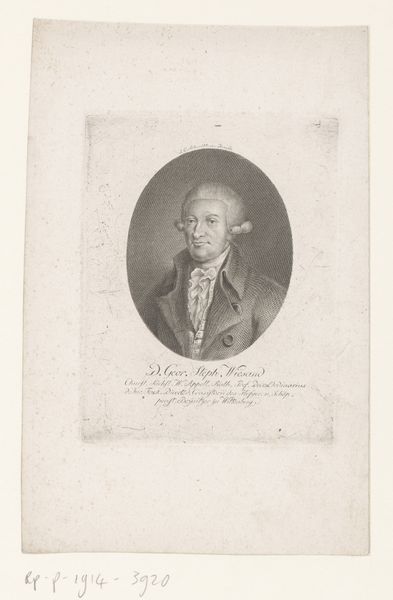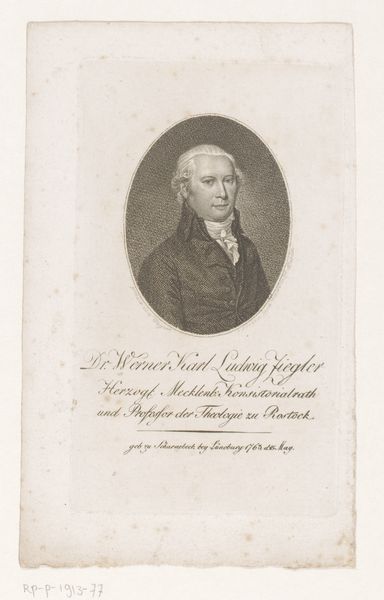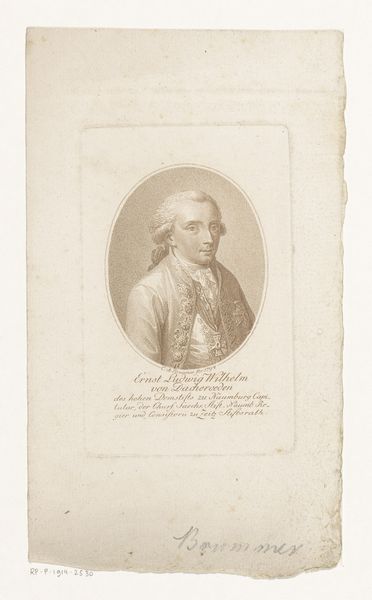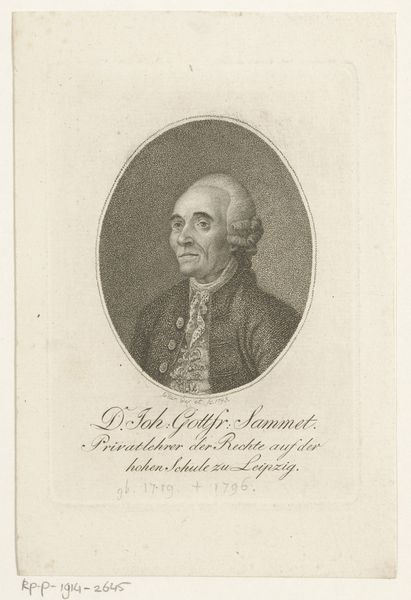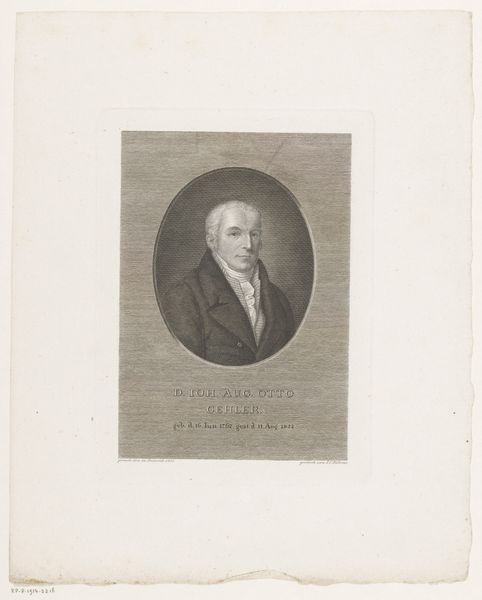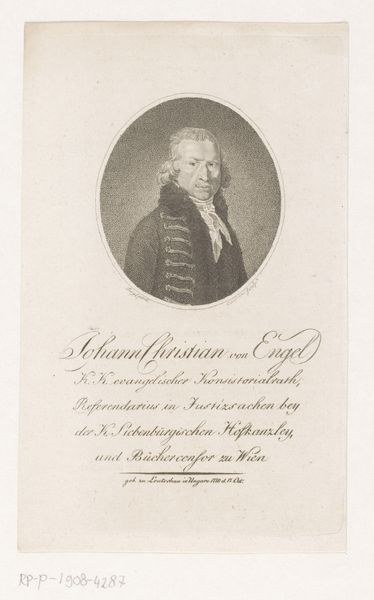
print, engraving
#
portrait
# print
#
engraving
Dimensions: height 162 mm, width 94 mm
Copyright: Rijks Museum: Open Domain
Editor: We're looking at "Portret van Lebrecht Friedrich Benjamin Lentin," an engraving from between 1780 and 1832, by Johann Daniel Laurenz. It's a striking image, very formal. What are your thoughts on its composition? Curator: The most immediately striking element is the portrait’s geometric severity. Note the stark contrast between the meticulously rendered texture of the subject’s coat, achieved through precise hatching, and the smooth, almost porcelain-like finish of the face. Do you perceive a tension there? Editor: Yes, it's like two separate realities coexisting. It's interesting you focus on the materials. Can you say more? Curator: Observe the oval frame; it serves to isolate and elevate the subject. The formal device forces us to contemplate the very essence of portraiture—the interplay of light, shadow, and form used to capture the sitter's likeness. Consider how the tight, controlled lines communicate a sense of restrained power, characteristic of Neoclassical ideals. Do you find evidence of those ideals here? Editor: Yes, the overall order feels neoclassical, now that you point it out. I was distracted by the details initially. Curator: Precisely. And distraction is a potent tool! Reflect upon how the artist utilizes techniques of line and form to elicit such an immediate reaction. Consider, as well, the space below the portrait: occupied by carefully inscribed text—all contributing to the engraving’s complex visual architecture. Editor: I hadn't thought of the lettering as part of the visual architecture. It makes me consider it as a piece with different, deliberate parts. Curator: Indeed. The material processes are the message and reveal insight that other interpretations may obfuscate. I trust you’ve found this elucidating.
Comments
No comments
Be the first to comment and join the conversation on the ultimate creative platform.
